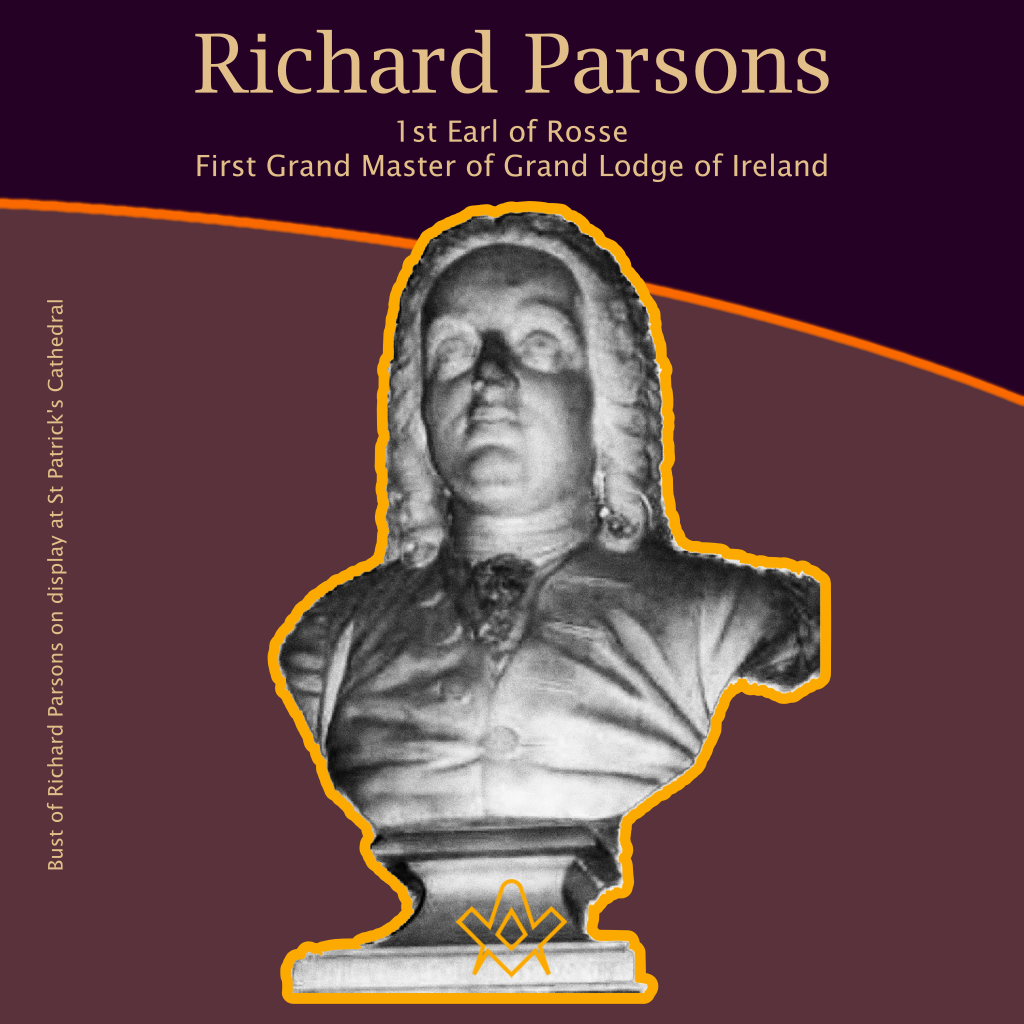Richard Parsons, 1st Earl of Rosse, was a prominent figure in the early 18th century in Ireland’s political and social scene.
Born into a family with a noble background, he held various titles and positions throughout his life, including serving as the Grandmaster of the Grand Lodge of Ireland, being a founding member of the infamous Hell-Fire Club, and earning a reputation as a libertine.
This article aims to take a brief look at the life and times of Richard Parsons, delving into his associations, personal life, and the legacy he left behind.
Richard Parsons was born in 1702 in Twickenham, Middlesex, England. He was the son of Richard Parsons, 1st Viscount Rosse, and Elizabeth Hamilton.
His mother was the niece of Sarah Jennings, Duchess of Marlborough, one of the most powerful women in England at the time. On his father’s side, his family can be traced back to New Ross, County Wexford, Ireland, where they had settled at the beginning of the 17th century.
Succeeding as the Viscount Rosse and Becoming the Earl of Rosse: When his father passed away in 1703, the younger Richard Parsons succeeded him, becoming the second Viscount Rosse.
In 1718, he was created the Earl of Rosse, another significant title in the British nobility system.
Grandmaster of the Grand Lodge of Ireland: Richard Parsons’ life and career go beyond his noble titles.
In 1725, he was elected the Grandmaster of the Grand Lodge of Ireland, taking the helm of the organization that played an essential role in Ireland’s Freemasonry circles.
Parsons continued exercising this duty until 1731, contributing to the growth and influence of the Grand Lodge of Ireland during this period.
Founding Member of the Hell-Fire Club:
Another intriguing aspect of Richard Parsons’ life is his membership in the Hell-Fire Club.
The Hell-Fire Club was an exclusive set of clubs that sprung up in Ireland and Britain in the 18th century.
These clubs were known for their debauchery, where members would indulge in excessive feasting, drinking, and other hedonistic activities.
The clubs were filled with some of the most notorious characters of their time, with Parsons being a founding member of one of the Irish branches, based in Dublin (another was formed in Limerick).
Richard Parsons also had a close connection with Philip, Duke of Wharton, who was Grand Master of England 1723, and a founder member of the Hell Fire Clubs in England.
The Dionysian Scrolls and Richard Parsons’ Literary Pursuits: Richard Parsons is also remembered for his authorship of the book “Dionysus Rising,” which he penned after a trip to Egypt.
In this book, he claimed to have found ancient Dionysian scrolls that were stolen from the Great Library of Alexandria.
These sacred texts are said to contain knowledge and rituals related to the god Dionysus, the deity of wine, fertility, and ecstasy in Greek mythology.
While the authenticity of these scrolls remains a topic of debate, Parsons’ work is still considered a fascinating historical account in the study of the Dionysian cult.
Personal Life of Richard Parsons, 1st Earl of Rosse
In his personal life, Richard Parsons married twice. His first marriage was to Mary Paulet, the eldest daughter of Lord William Powlett, on 25th June 1714.
Mary Paulet’s family lineage includes the 1st Duke of Bolton and the marquis de Montpouillon. The couple had two sons and a daughter. Sadly, Mary Paulet passed away in November 1718, leaving behind their young children.
In the years that followed, Parsons remarried, this time to Frances Claxton. The couple did not have any children together, and little is known about their shared life.
Richard Parsons, 1st Earl of Rosse, passed away on 21st June 1741 at his home in Molesworth Street, Dublin, in the parish of St Anne.
His titles and landholdings were succeeded by his eldest son, Richard, who became the 2nd Earl of Rosse.
The late Earl of Rosse was, in character and disposition, like the humorous Earl of Rochester; he had an infinite fund of wit, great spirits, and a liberal heart; was fond of all the vices which the beau monde call pleasures, and by those means first impaired his fortune as much as he possibly could do; and finally, his health, beyond repair.
[Source: Gilbert, J.T. 1861. A History of the City of Dublin. Volume III.]
Legacy of Richard Parsons, 1st Earl of Rosse
While the Earl of Rosse title became extinct in 1764 after Parsons’ sons died without issue, it was recreated in 1806 for a junior branch of the family.
This new branch of the Parsons family had settled in Birr, King’s County, in the early 17th century.
The impact of Richard Parsons, 1st Earl of Rosse, was substantial within the Freemasonry circles in Ireland, particularly during his time as the Grandmaster of the Grand Lodge of Ireland.
His association with the notorious Hell-Fire Club also left a lasting impression on the history of Irish high society.
Richard Parsons can be seen as a polarizing figure; on the one hand, he was a committed Freemason who sought to expand and develop the organization, while on the other hand, he was a member of a secretive and infamous club that reveled in hedonistic activities.
Regardless of the various aspects of his life, the story of Richard Parsons, 1st Earl of Rosse, remains a captivating tale of power, influence, and excess in the early 18th century.
Additional reading: http://www.irishmasonichistory.com/
Recent Articles: in people series
 Celebrate the extraordinary legacy of The Marquis de La Fayette with C.F. William Maurer's insightful exploration of Lafayette's 1824-25 tour of America. Discover how this revered leader and Freemason was honored by a young nation eager to showcase its growth and pay tribute to a hero of the American Revolution. |
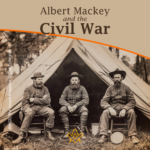 Albert Mackey and the Civil War In the midst of the Civil War's darkness, Dr. Albert G. Mackey, a devoted Freemason, shone a light of brotherhood and peace. Despite the nation's divide, Mackey tirelessly advocated for unity and compassion, embodying Freemasonry's highest ideals—fraternal love and mutual aid. His actions remind us that even in dire times, humanity's best qualities can prevail. |
 Discover the enduring bond of brotherhood at Lodge Dumfries Kilwinning No. 53, Scotland's oldest Masonic lodge with rich historical roots and cultural ties to poet Robert Burns. Experience rituals steeped in tradition, fostering unity and shared values, proving Freemasonry's timeless relevance in bridging cultural and global divides. Embrace the spirit of universal fraternity. |
 Discover the profound connections between John Ruskin's architectural philosophies and Freemasonry's symbolic principles. Delve into a world where craftsmanship, morality, and beauty intertwine, revealing timeless values that transcend individual ideas. Explore how these parallels enrich our understanding of cultural history, urging us to appreciate the deep impacts of architectural symbolism on society’s moral fabric. |
 Discover the incredible tale of the Taxil Hoax: a stunning testament to human gullibility. Unmasked by its mastermind, Leo Taxil, this elaborate scheme shook the world by fusing Freemasonry with diabolical plots, all crafted from lies. Dive into a story of deception that highlights our capacity for belief and the astonishing extents of our credulity. A reminder – question everything. |
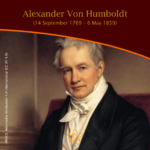 Dive into the extraordinary legacy of Alexander Von Humboldt, an intrepid explorer who defied boundaries to quench his insatiable thirst for knowledge. Embarking on a perilous five-year journey, Humboldt unveiled the Earth’s secrets, laying the foundation for modern conservationism. Discover his timeless impact on science and the spirit of exploration. |
 Voltaire - Freethinker and Freemason Discover the intriguing connection between the Enlightenment genius, Voltaire, and his association with Freemasonry in his final days. Unveil how his initiation into this secretive organization aligned with his lifelong pursuit of knowledge, civil liberties, and societal progress. Explore a captivating facet of Voltaire's remarkable legacy. |
 Robert Burns; But not as we know him A controversial subject but one that needs addressing. Robert Burns has not only been tarred with the presentism brush of being associated with slavery, but more scaldingly accused of being a rapist - a 'Weinstein sex pest' of his age. |
 Richard Parsons, 1st Earl of Rosse Discover the captivating story of Richard Parsons, 1st Earl of Rosse, the First Grand Master of Grand Lodge of Ireland, as we explore his rise to nobility, scandalous affiliations, and lasting legacy in 18th-century Irish history. Uncover the hidden secrets of this influential figure and delve into his intriguing associations and personal life. |
 James Gibbs St. Mary-Le-Strand Church Ricky Pound examines the mysterious carvings etched into the wall at St Mary-Le-Strand Church in the heart of London - are they just stonemasons' marks or a Freemason’s legacy? |
 Freemasonry and the Royal Family In the annals of British history, Freemasonry occupies a distinctive place. This centuries-old society, cloaked in symbolism and known for its masonic rituals, has intertwined with the British Royal Family in fascinating ways. The relationship between Freemasonry and the Royal Family is as complex as it is enduring, a melding of tradition, power, and mystery that continues to captivate the public imagination. |
 A Man Of High Ideals: Kenneth Wilson MA A biography of Kenneth Wilson, his life at Wellington College, and freemasonry in New Zealand by W. Bro Geoff Davies PGD and Rhys Davies |
 In 1786, intending to emigrate to Jamaica, Robert Burns wrote one of his finest poetical pieces – a poignant Farewell to Freemasonry that he wrote for his Brethren of St. James's Lodge, Tarbolton. |
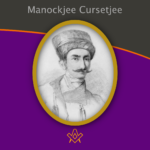 Alex Lishanin explores Mumbai and discovers the story of Lodge Rising Star of Western India and Manockjee Cursetjee – the first Indian to enter the Masonic Brotherhood of India. |
 Aleister Crowley - a very irregular Freemason Aleister Crowley, although made a Freemason in France, held a desire to be recognised as a 'regular' Freemason within the jurisdiction of UGLE – a goal that was never achieved. |
 Sir Joseph Banks – The botanical Freemason Banks was also the first Freemason to set foot in Australia, who was at the time, on a combined Royal Navy & Royal Society scientific expedition to the South Pacific Ocean on HMS Endeavour led by Captain James Cook. |
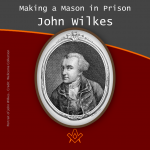 Making a Mason in Prison: the John Wilkes’ exception? |
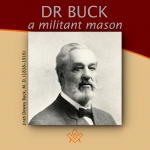 "To be a good man and true" is the first great lesson a man should learn, and over 40 years of being just that in example, Dr Buck won the right to lay down the precept. |
 Elias Ashmole: Masonic Hero or Scheming Chancer? The debate is on! Two eminent Masonic scholars go head to head: Yasha Beresiner proposes that Elias Ashmole was 'a Masonic hero', whereas Robert Lomas posits that Ashmole was a 'scheming chancer'. |
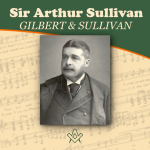 Sir Arthur Sullivan - A Masonic Composer We are all familiar with the comic operas of Gilbert and Sullivan, but did you know Sullivan was a Freemason, lets find out more…. |
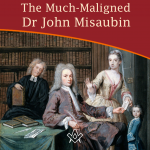 The Much-Maligned Dr John Misaubin The reputation of the Huguenot Freemason, has been buffeted by waves of criticism for the best part of three hundred years. |
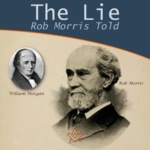 Was William Morgan really murdered by Masons in 1826? And what was the lie Masonic author Rob Morris told? Find out more in the intriguing story of 'The Morgan Affair'. |
 Lived Respected - Died Regretted Lived Respected - Died Regretted: a tribute to HRH The Prince Philip, Duke of Edinburgh |
 Who was Moses Jacob Ezekiel, a Freemason, American Civil War Soldier, renowned sculptor ? |
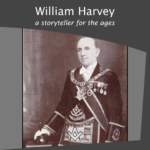 A Masonic author and Provincial Grand Master of Forfarshire in Scotland |
 Who was Philip, Duke of Wharton and was he Freemasonry’s Loose Cannon Ball ? |
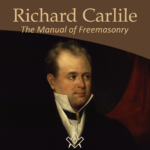 Richard Carlile - The Manual of Freemasonry Will the real author behind The Manual of Freemasonry please stand up! |
 Nicholas Hawksmoor – the ‘Devil’s Architect’ Nicholas Hawksmoor was one of the 18th century’s most prolific architects |
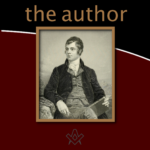 By Bro. Anthony Oneal Haye (1838-1877), Past Poet Laureate, Lodge Canongate Kilwinning No. 2, Edinburgh. |
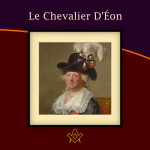 The Curious Case of the Chevalier d’Éon A cross-dressing author, diplomat, soldier and spy, the Le Chevalier D'Éon, a man who passed as a woman, became a legend in his own lifetime. |
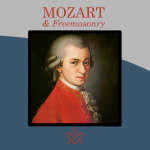 Mozart Freemasonry and The Magic Flute. Rev'd Dr Peter Mullen provides a historical view on the interesting topics |
masonic knowledge
to be a better citizen of the world
share the square with two brothers

click image to open email app on mobile device


